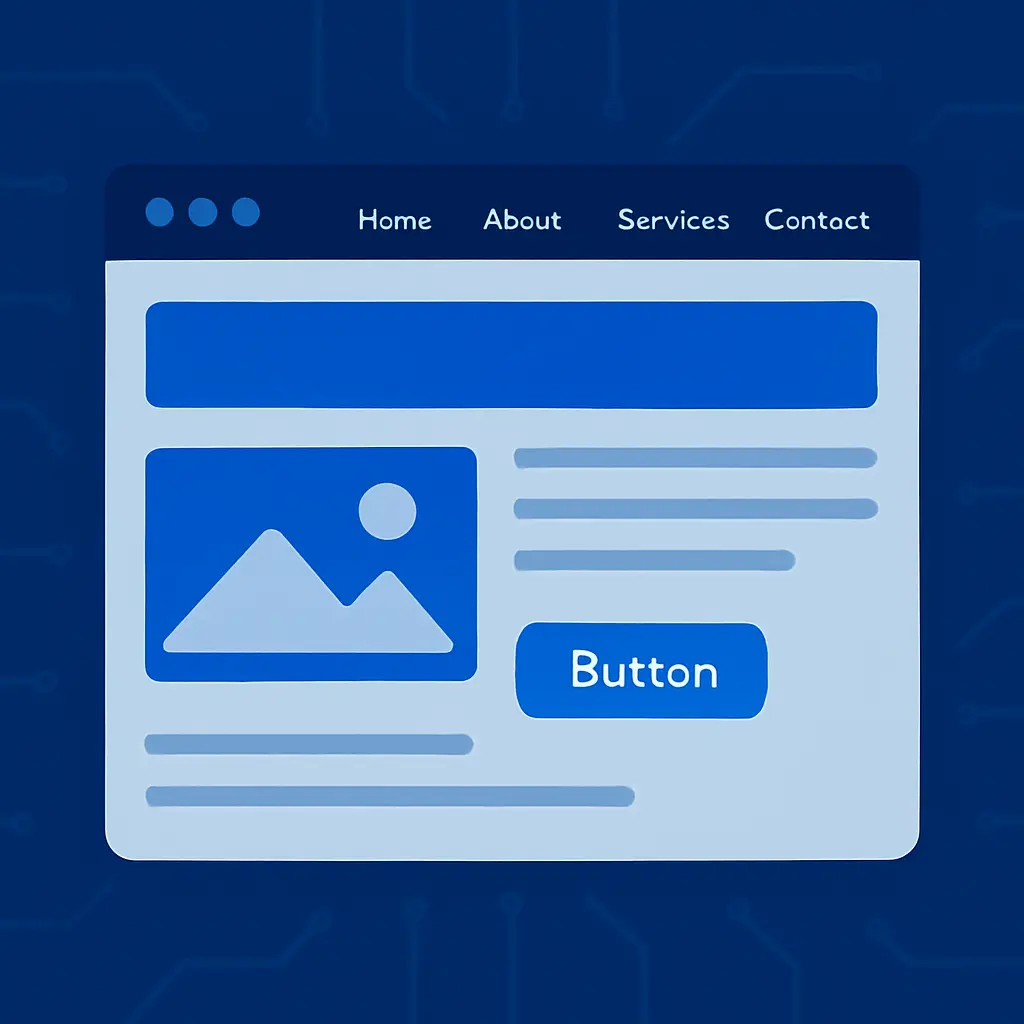A distilled look at timeless principles to strengthen your site’s design, readability, and trust.
There is no doubt you will find website design a topic in no way under-discussed. Everybody seems to have a hat to throw into the proverbial ring. And many of these sources, having concocted their own doctrines of dos and do-nots, provide conflicting absolutes. Whether it be blogs, articles, or newsletters. The advice they give, as to what does and does not work, can often times be traced back to consensus, commonality, or conditions owing to times long passed. For time flows swiftly in the online world. And what may have worked three or four years back, can now find itself tired and unintuitive. Now, to be clear, this does not mean that we are any arbiter of ultimate truth. For we, like those who authored those blogs, articles, and news letters, are also of flesh and blood. We will not list speculation, labelled as fact. But we will provide an assortment of points to bear in mind, which have stood the test of time and can be applied universally. Assuming, of course, that there isn’t some great revolutionary overhaul or collapse in the manner of which online interaction and engagement commences, or a complete obliteration. Avoiding that assumption, here as follows is a compilation of website design choices that will do nothing to harm your platform, but instead bolster its success.
What They See
The first and foremost point to keep in focus is legibility. Now, to some, this may seem an apparent and obvious point, without need of discussion. And ideally they should be correct. Unfortunately, however, this is not the case. All it takes is a cursory peruse of the plethora of websites populating the online space to see a multitude of examples to the contrary. The baffling component to this, is that it is such a simple thing to avoid and fix. If a body of text, or even a snippet, is present on your website, keep the background to that text clear and plain. It is nonsensical to make its readability any more difficult than it should be. Use fonts which do not require the reader to squint or take more time than necessary to read. If you want to convey information to your visitor, serve it to them on a silver platter. Do not require them to decipher what you may or may not have said.

The second point, expanding upon the concept of the first, is to keep a focus on your visual-hierarchy. Your text is now legible? Great. Now compel the attention of your visitors towards aspects and points of information in order of their level of importance. If you wish for your visitors to be aware of something, leverage the layout, size and contrast to make that aspect or information unavoidable. Signpost what you do not wish for them to miss.

In keeping with the theme of the first two points, this will also focus on the presentation of your content. When writing for your site, whether it be in the body of your text or your labels, be sure to be clear and descriptive in the language you use. What is the purpose of your website? Who is the audience that you will be addressing? Write with these points in mind. You should be aiming to leave no confusion in the wake of your words. At every opportunity, you should be considering this. Was this clear? Do my audience understand what I’ve presented to them? People will not commit to or buy a product about which they do not understand. Nor will they accept or internalize information that is of the same. Clarity, as is of the format of your text, should also be of its content.
It may be that you’re beginning to notice a pattern arising. More apparently, perhaps, with this next point, which also revolves around this aspect of clarity. And that is of clear and straightforward navigation. A website possessing burdensome navigation is gatekeeping the products or information it wants to impart. Not only is this section about clarity of navigation, however, but also about the aesthetics of your site. A commonly floated statistic is that “94% of a visitor‘s first impression of a website is formulated as a result of its appearance.” This statistic is most assuredly something to be cognisant of. The use of layout, colour, font, and image quality, to name a few, should be directed towards the construction of a visually appealing site. It would be folly to have visitors miss out on the value you have to offer, merely as a result of their not liking the way your site looks.

What They Get
Now, venturing away from the points of visual clarity, comes the point of trust. Trust is something that, of course, must be earned. However, if it could be earned only, no alternate sources of commerce would ever have arisen. Therefore, we must operate on an idea of implicit trust. A pre-emptive trust. One which can be built and bolstered through various means that you can bake into the presentation your website. To build that trust, so those visitors might convert into customers, you must provide them reasons to trust you. To this end, you can use evidence and social proof. Awards, customer reviews, the number of customers served, statistics to reinforce your claims, use what will assuage the worries of a potential customer. For your website’s overall trust, create an “about us” page to inform readers on your business and practices, bio pages for your authors and writers, contact information so they might reach out for information not provided, and support options to assure them of your commitment to your services. Once they have transitioned to a customer, your product’s quality will be that which builds your trust factor.
Here we transition from the overt, in terms of customer-facing aspects, and find ourselves in the realm of optimisation. More specifically, search-engine optimisation, or SEO. A tool, no doubt, fastened upon the belt of every website’s builder and maintenance overseer. It truly is a vital aspect of optimisation for your website. For what purpose is there in having one if there is nobody there to see it? Search engines can be finicky in their comprehensibility, with ever-changing algorithms, and the nebulous cloud of user focus, interest, and query. There are means of navigating this, however. And one of them is research. Research into keywords, words and terms that appear frequently in user searches. The use of these words and terms, organically and subtly of course, in the bodies of text and headers of your site can elevate its location in the results provided by that search engine. And thereby increase the amount of traffic driven to your website. And it goes without saying, except that I must mention it here, to keep away from AI generated text. For it is a bane of SEO, and no good will come of it.
And finally, also in keeping within the principles of optimisation, is indeed optimisation. For load speeds, trimming the fat, compressing images, removal of unnecessary plug-ins and extensions, and the shortening of slugs (the series of slashes and words after your domain name). For alternate devices and browsers, ensuring that, once again, you are not constructing yet another barrier to entry; and by formulating streamlined site-maps and their ilk. A brilliantly beneficial by-product of this optimisation is it’s immense contribution also towards SEO. Whilst the last segment covered on-site or content SEO, the information addressed in this segment encapsulates technical SEO. All of the points addressed in this segment will optimise your site’s positioning in search results whilst also optimising your visitor’s user experience. A war on two fronts, which you would be foolish to ignore.

What You Have
And here we arrive at the conclusion. Whilst this list could have been longer, it would only have been so with points which may not necessarily be as timeless as those listed here. And that was not the point of this piece. We at QuantumPixel would be remiss to include points that may quickly sour in the passing times. And so, we have focused on core tenets that we ourselves use at the foundational level of the websites that we create. We hope that these will be of use to you in your journey ahead. And we thank you for, at least in part, joining us on our journey to bring bespoke quality to the digital space.
If you’re ready to improve your website with these principles or want a design partner to help you implement them, contact us. Let’s craft a digital presence that truly works.
